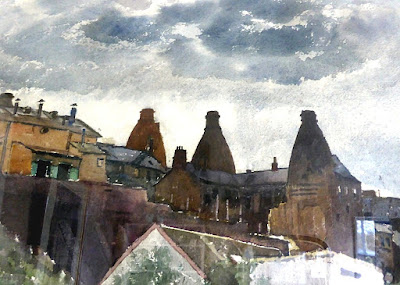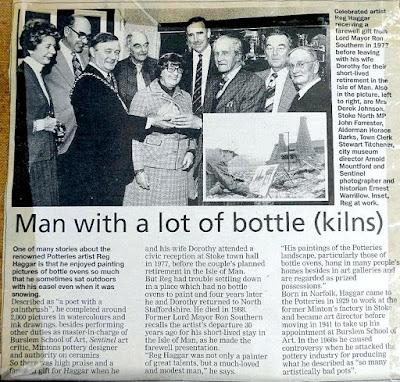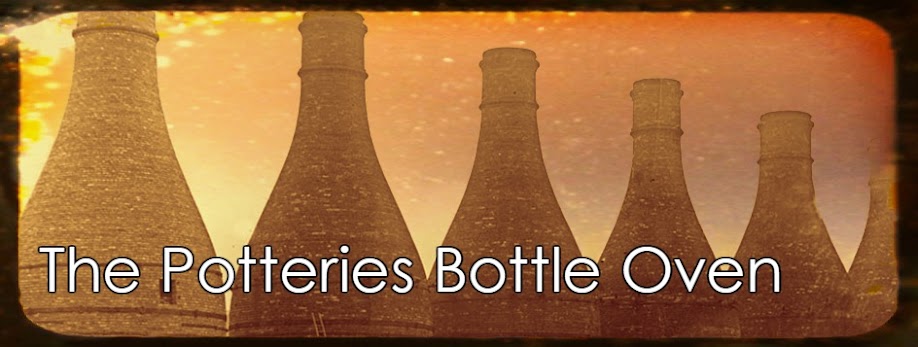Last of the Bottle Ovens
Essay by Reginald G. Haggar RA
Bottle ovens have a peculiar fascination. No two of them are alike. They seem as full of character and offer as many surprises as human beings, and in temperament they are as volatile and unpredictable.
The few that remain awaken special regard because their strange distorted but fantastically beautiful forms seem deeply imbued with the ardours of a past race of men who lived independent, passionate lives as crafts-men in clay and worked out their destinies by the unpredictable arts of fire. How ominous sounding is that old phrase by which men then reckoned their wages: "Good from oven".
Bottle ovens are remarkably varied in contour. Some are prim and severe, spinsterish even in line and appearance; others peculiarly curvaceous. The immense heat of the firing distorted their swelling curves, great fissures and cracks appeared, drastic surgery was necessary to preserve them, the brickwork was renewed and their great bellies were strapped round with girdles of iron to save them from collapse.
 |
| Longton Elektra Porcelain Works Photo: source unknown Date: unknown |
This is the world of the Potter in which nearly all my working life as a creative designer and painter have been spent, and, in spite of the knowledge of what booms and slumps (and the collapse of Wall Street in 1930 was a traumatic experience) and the incredibly slow social and industrial revolutions have meant in terms of visual awareness - awful wastes of dereliction, appalling slums, slum houses, slum shops, slum factories, gaunt streets, death-inviting marl holes, glistening shraff tips, and the mantle and plumes of smoke I have come to love its splendours and miseries. This is one of the most haunting and in a curious way beautiful regions of the British Isles.
To capture a little of this beauty of shape and atmosphere, and to express what I feel about it has been my aim in painting pictures of the architecture of potter and pigeon-fancier and the waste lands in which they live, work and play.
Reginald G Haggar RA
Reginald George Haggar (1905–1988) R.A., A.R.C.A., F.R.S.A. was a significant British ceramic designer. He was born in Ipswich and studied at Ipswich School of Art and the Royal College of Art.
In 1929, he became assistant designer at Minton's pottery in Stoke-on-Trent, rising to art director six months later, a post he held until 1939. Working in water colours and ceramics, his designs reflected both the radical and lyrical elements of the Art Deco style.
After leaving Minton, he became Master-in-Charge of the Stoke School of Art to 1941 and then of Burslem School of Art until 1945.
He was an artist and lecturer in the Potteries area. He painted many pictures of North Staffordshire.
| Gladstone Pottery Museum from what is now the car park Water colour by Reginald G Haggar Photo: source Gladstone Pottery Museum |
| Sampson Smith's Pottery and Garfield Works, Longton demolition Water colour by Reginald G Haggar Photo: Private Collection |
 |
| Sutherland Road, Longton Looking up towards Garfield Works Water colour by Reginald G Haggar Photo: Private Collection |
 |
| Reginald G Haggar - article from The Evening Sentinel |
